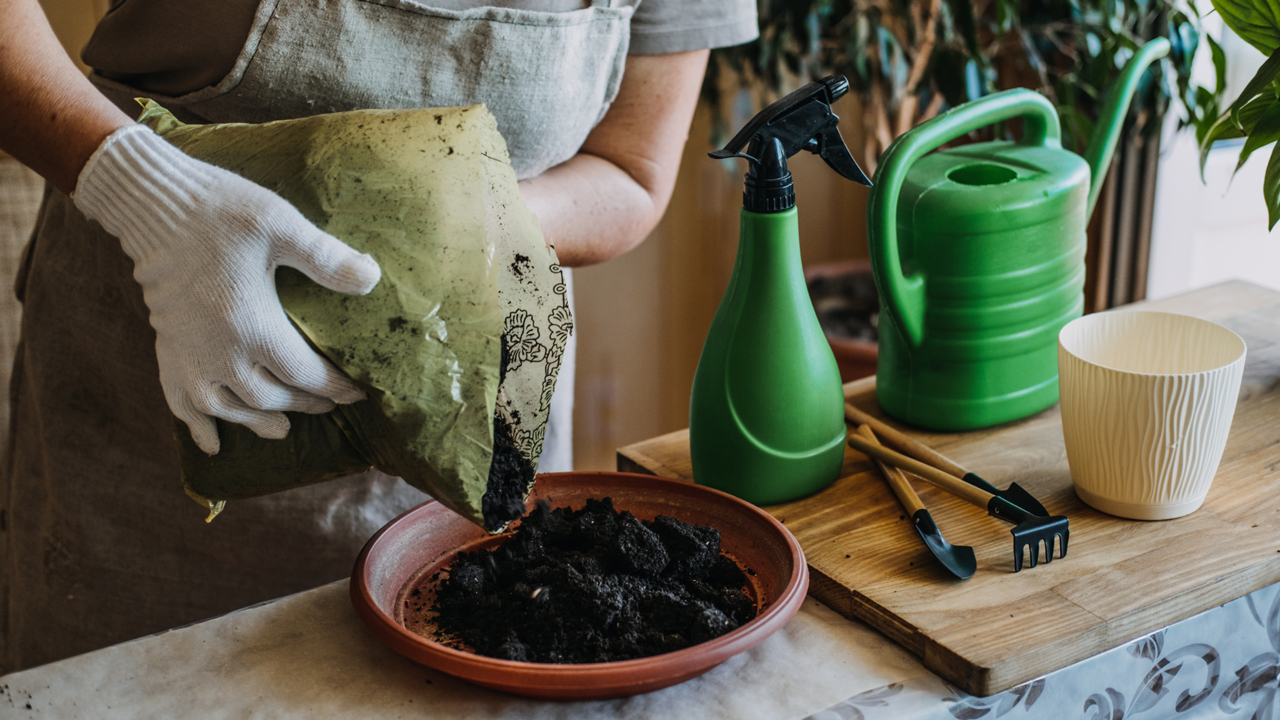Key Takeaways:
- Indoor plants need regular fertilizing since they lack natural soil nutrients.
- Fertilizers provide essential nutrients like nitrogen, phosphorus, and potassium.
- Fertilize more often during spring and summer when plants are growing.
- Liquid, slow-release, organic, and synthetic fertilizers each have their benefits.
- Always dilute liquid fertilizer and avoid over-fertilizing to prevent root burn.
- Proper fertilizing leads to faster growth, more blooms, and stronger roots.
Essential Guide to Fertilizing Indoor Plants
Fertilizing indoor plants is key to keeping them vibrant and healthy. Many people might think watering is enough, but plants need the right nutrients, too. This guide will help you understand the importance of fertilizing your indoor plants and how to do it properly.
Why does fertilizing matter? Indoor plants don’t have access to the natural nutrients that outdoor plants do. Over time, the soil loses its nutrients, and that’s when plant maintenance services like fertilizing come in handy. This process helps plants get the essential nutrients they need to grow, bloom, and thrive.
What Fertilizer Does for Your Plants
Fertilizer provides three major nutrients:
Nitrogen (N): Encourages leaf growth.
Phosphorus (P): Helps with root development and flowering.
Potassium (K): Improves overall plant health and disease resistance.
These nutrients are essential because they promote growth, better flowers, and stronger roots. Indoor plants rely on you to supply these nutrients, as they aren’t replenished naturally in a pot.
Regular fertilizing keeps plants strong. Without proper feeding, they may show slow growth, fewer blooms, or weak roots.
When to Fertilize Your Indoor Plants
One of the first questions people ask is, “How often should I fertilize?” The answer depends on the type of plant and its growth stage. Plants typically need more nutrients during their growing season, which usually happens in spring and summer.
Here’s a general guideline:
Spring & Summer: Fertilize every 2-4 weeks.
Fall & Winter: Reduce fertilization to once a month or even stop if the plant is dormant.
Some indoor plants, like succulents or cacti, don’t need frequent feeding. On the other hand, flowering plants and fast-growing species may need more regular care.
Keep an eye on your plants. If their leaves start turning yellow or growth seems stunted, they may be telling you they need nutrients.
Types of Fertilizers
Fertilizers come in different forms. Let’s break down the most common types:
Liquid Fertilizer: Easy to apply. You just mix it with water and feed the plant when you water it. This is great for most indoor plants and allows for quick nutrient absorption.
Slow-Release Fertilizer: These come in the form of pellets that you mix into the soil. They release nutrients over time, so you don’t need to fertilize as often.
Organic Fertilizer: These are made from natural materials like compost or fish emulsion. Organic options can improve soil quality over time but might not provide immediate results.
Synthetic Fertilizer: Man-made and typically more potent. These give quick results but need to be applied carefully to avoid over-fertilizing.
Make sure to choose a fertilizer that suits your plants’ needs. Some plants prefer organic options, while others thrive on synthetic fertilizers.
How to Fertilize Indoor Plants
Now that you know when and what to use, let’s get into how to actually fertilize indoor plants. It’s simple, but a few mistakes can cause issues like over-fertilization.
Here’s how you can do it right:
Step 1: Check your plant’s needs. Not all plants need the same fertilizer or feeding schedule.
Step 2: Dilute the liquid fertilizer according to the instructions. This is crucial, as using too much can burn your plant’s roots.
Step 3: Water the plant lightly before fertilizing. This helps avoid fertilizer burn and ensures the nutrients are absorbed evenly.
Step 4: Apply the fertilizer by pouring it onto the soil. If you’re using slow-release pellets, mix them into the soil.
Step 5: Water again lightly to help the fertilizer penetrate the soil.
Remember: Less is more when it comes to fertilizing. Over-fertilizing can cause more harm than good.
Common Fertilizer Mistakes to Avoid
Even experienced plant lovers make mistakes when it comes to fertilizing. Here are some common pitfalls:
Over-fertilizing: Giving too much fertilizer can burn your plant’s roots. Symptoms include brown or crispy leaf edges.
Wrong timing: Fertilizing when your plant is dormant (usually in winter) can cause stress instead of growth.
Not enough water: Fertilizer needs water to be effective. Without proper watering, the nutrients won’t reach the roots.
Using the wrong type of fertilizer: Not all fertilizers work for all plants. Research your plant’s specific needs before applying anything.
Stay mindful of these mistakes to ensure your plants thrive and grow to their full potential.
Benefits of Fertilizing
If you’re consistent with your fertilizing routine, you’ll notice some positive changes in your plants. Here’s what to expect:
Faster growth: With the right amount of nitrogen, you’ll see faster, healthier leaf production.
More blooms: Phosphorus-rich fertilizers will help flowering plants bloom more often.
Stronger roots: Potassium strengthens the roots, making your plants more resilient to pests and diseases.
Improved overall plant health: Regular feeding leads to healthier, longer-living plants.
Fertilizing is a simple but effective way to maintain the health of your indoor plants.
How Mr. PlantSoCal Can Help
Caring for indoor plants can be overwhelming, especially when it comes to fertilizing and overall maintenance. That’s where professional plant services come in. Mr. PlantSoCal offers everything from interior planting design to plant maintenance services to make sure your plants are thriving all year round.
By hiring plant services like ours, you’ll save time and avoid common plant care mistakes. Plus, we help you create a stunning interior planting design that enhances your space while ensuring your plants stay healthy.
Let us take the guesswork out of fertilizing and maintaining your indoor garden. Contact Mr. PlantSoCal today for expert plant care! Your plants will thank you.


